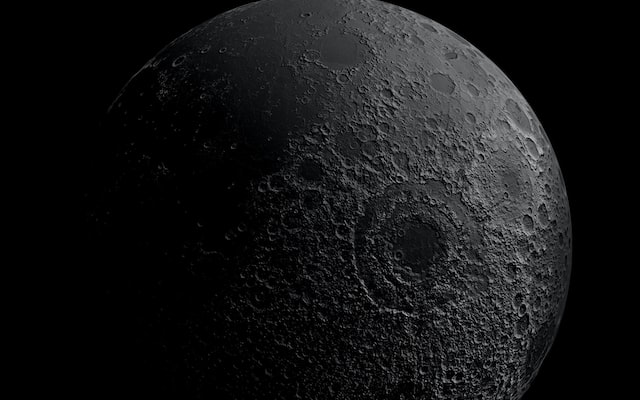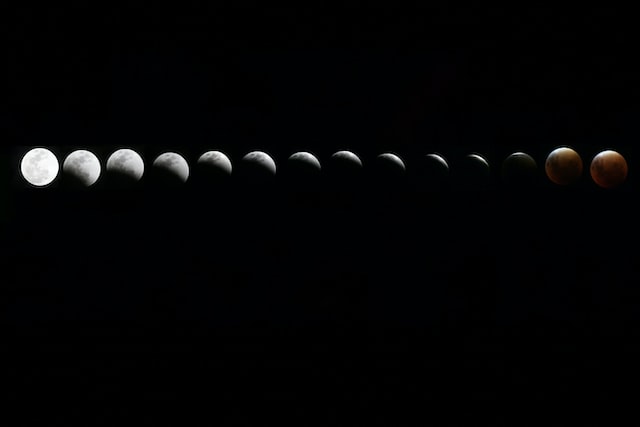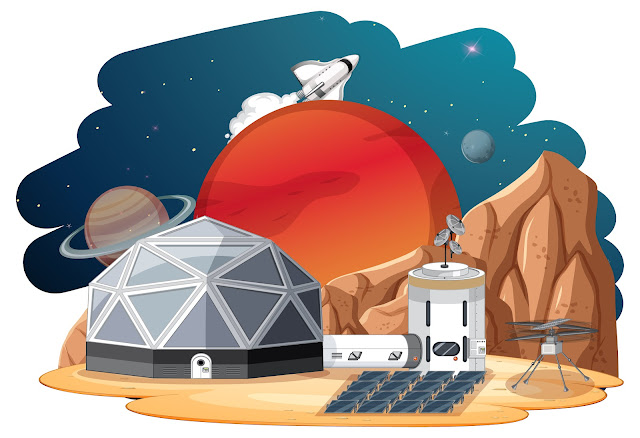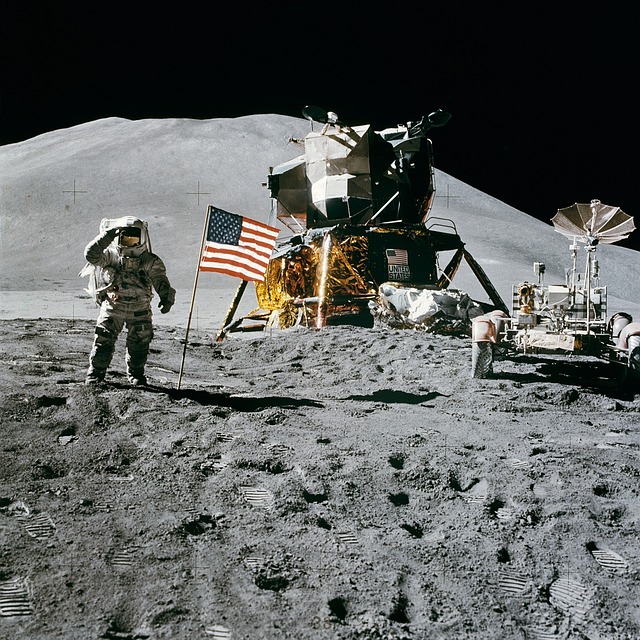To envision the home of humanity on an alien planet, BIG has teamed up with SEArch+ (Space Exploration Architecture) and ICON, a developer of cutting-edge construction technologies.
A "space-based construction system that could support future exploration of the Moon" is what the partnership with NASA is aiming to create. "A sustainable lunar habitat, Project Olympus will be the first human foray into extraterrestrial construction with robust structures that provide better thermal, radiation, and micrometeorite protection than metal or inflatable habitats can offer," according to the project's website.SYNOPSIS
A private company has been awarded $57 million to create technologies that will allow people to establish outposts on the Moon and Mars using local soil and rocks. A simulated 3D-printed Red Planet habitat is the kind of prototype that ICON has already created. 2023 is set to be a year of space missions, new robots, spacecraft, rockets, and satellites. Artemis II will be the first manned orbital mission to the Moon in more than 50 years. NASA is researching the development of an early space construction system.
Texas-based company ICON has invested $57.2 million in a project that will enable people to construct workstations on the moon and Mars. The company already constructed the first 3D-printed home in the US with all necessary permits in 2018. If everything goes according to plan, there will also be a trial that is even more ambitious. The company plans to construct the first structure on an alien world, which would be a significant achievement. On November 16, Artemis 1 was launched, placing an unmanned Orion spacecraft in lunar orbit.
In 2024, Artemis II will launch a manned mission that will orbit the moon and make a safe return to Earth. And 2025 will be the year of actually visiting the Moon when Artemis III docks with brand-new astronauts.
Introduction
What is the Olympus Project, which NASA is funding to construct on the moon?
The US Space Agency has awarded a private company $57 million to create technologies that will allow people to establish outposts on the Moon and Mars using the local soil and rocks. Unquestionably, a new space age is beginning, with 2022 set to be a year of space missions, new robots, spacecraft, rockets, and satellites that aim to carry on the spirit of human exploration.
The company is working to create technology that will enable humans to establish outposts on the moon and Mars using dirt and rock already on Earth. A simulated 3D-printed Red Planet habitat is the kind of prototype that ICON has already created. On November 16, Artemis 1 was launched, placing an unmanned Orion capsule in lunar orbit. On December 11, Orion is scheduled to make its way back to Earth via an ocean splashdown. According to a representative, "moving this development along with our commercial partners will create the capabilities we need for future missions."
 |
| Photo by Dennys Hess on Unsplash |
And in this regard, the Moon is currently positioned as the primary goal for both a woman's first visit to the Moon and a man's return to the Moon. To test a new rocket and spacecraft that could travel to the Moon, orbit it, and safely return to Earth, NASA launched the Artemis I mission last year, which was a historic unmanned launch. Katherine Johnson, a NASA pioneer who had helped set the stage for the first human mission to the Moon with her calculations of orbital trajectories, was celebrated as one of the inspirations behind this mission.
Other crucial issues must be addressed while scientists and technicians manage expectations and nerves, gather data from that mission that was conducted in the latter part of last year, and get ready for Artemis II, which will launch in 2024 and be the first manned orbital mission to the Moon in more than 50 years, to "prepare the lunar ground" and project the human stay there. The reason for this is that, unlike the six Apollo missions that were able to land on the Moon, NASA does not intend to go back there just to visit for a few hours. There are plans for extended stays as well as the establishment of a lunar research colony.
 |
| Photo by Marcus Dall Col on Unsplash |
To accomplish this on land, it is researching the development of an early space construction system, in which it was able to invest a sizeable sum of money to kickstart and eventually materialize in the upcoming years. NASA gave $57.2 million to the Texas-based company ICON at the end of November for Project Olympus (Olympus), which aims to create technology that will enable people to construct workstations. advanced on the moon and Mars using locally available soil and rocks. NASA Langley Solar Dynamics Observatory is working with ICON to develop the technology, which includes a robotic arm with a specialized attachment for pulverizing material that will be combined with a binding agent.
We will need strong, resilient, and high-capacity systems that can utilize the natural resources of the moon and other planetary bodies, according to Jason Ballard, co-founder, and CEO of ICON. In addition, he said, "We are pleased that our research and engineering to date have shown that such systems are indeed possible, and we now look forward to making that possibility a reality." In terms of using cutting-edge building technologies on Earth, ICON is a pioneer in this field. For instance, the business constructed the first 3D-printed home in the US with all necessary permits in 2018 and has since shipped similar homes to entire communities in both the US and Mexico.
Projects based on extraterrestrial bodies were another area of work for the company. The building of a 158-square-meter "habitat" with a Mars-inspired design was one of them. NASA will use it on the Project Crew Health and Performance Analog (CHAPEA) mission, which will launch in 2023 under the name Mars Dune Alpha. NASA and ICON have a 2028 expiration date on their agreement. The rationale behind Project Olympus's 2020 launch was that its technology could aid in constructing the vital infrastructure—such as landing pads, travel routes, and habitats—necessary for the Moon and Mars's habitability.
The company will be able to advance its technology and procedures thanks to the recently announced NASA contract, which was granted through the organization's Small Business Innovation Research program. According to company representatives, ICON plans to use the funding to research how real and model samples of lunar regolith behave in lunar gravity.
On a space mission that simulates lunar gravity, the company will also test its hardware and software. If everything goes according to plan, there will also be a trial that is even more ambitious. According to Ballard, this contract will enable humanity to construct its first structure on an alien world, which will be a significant achievement. ICON hopes that this new contract will enable them to make a breakthrough in the space industry.
 |
| Image by brgfx on Freepik |
The private initiatives to create autonomous construction systems on the moon have attracted NASA's keen attention. The space agency plans to use its Artemis program by the end of the 2020s to establish a long-term, sustainable human presence on and around the Moon.
On November 16, Artemis 1 was launched, placing an unmanned Orion spacecraft in lunar orbit. In 2024, Artemis II will launch a manned mission that will orbit the moon and make a safe return to Earth. And 2025 will be the year of actually visiting the Moon when Artemis III docks with brand-new astronauts of both sexes on its selenite surface.
 |
| Image by WikiImages from Pixabay |
"We need cutting-edge new technologies that are tailored to those environments and our exploration needs if we are to explore other worlds." The capabilities we need for upcoming missions will be developed by advancing this development with our commercial partners, according to Niki Werkheiser, director of technology maturation in NASA's Space Technology Mission Directorate.
Lunar-material building
With the arrival of an important component on the International Space Station (ISS) in October 2021, NASA made another stride toward establishing future human colonies on the Moon and Mars. The US Space Agency carried a 3D printer that creates solid materials using lunar dust on a resupply mission. It was a device made to show how habitation complexes could be built on other worlds without bringing supplies or prefabricated structures by using lunar regolith (loose earth or rock) and similar extraterrestrial surfaces.
The Cygnus spacecraft, created by the US aerospace company Northrop Grumman, delivered the printing system, which is intended to revolutionize future missions to the Moon by enabling the creation of equipment on the celestial body itself rather than having to continuously fly bulky and expensive cargo.
Conclusion
Lunar dust, or regolith, as it is officially known, has always been an annoyance. The astronauts' health may be harmed by this, and the devices that become clogged with this "stardust" undoubtedly face danger. However, space agencies have been working on finding a use for it for a while. To do this, they tested a system called Moonrise that uses lasers to melt lunar materials into raw materials while only weighing three kilograms. Moonrise is an exciting and innovative technology that could allow us to make use of the lunar dust, preventing it from harming both the astronauts and their devices.

.webp)
.gif)
.gif)

.gif)





0 Comments
Please do not enter spam links in the comment box.